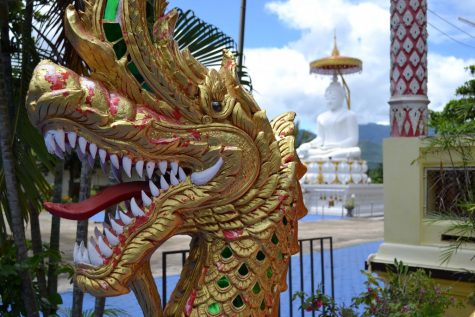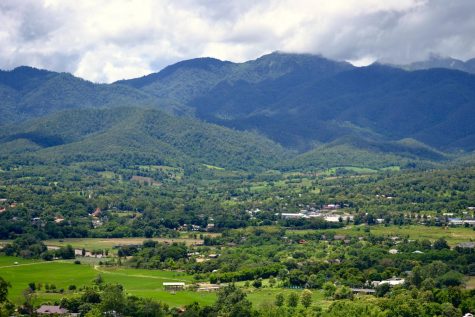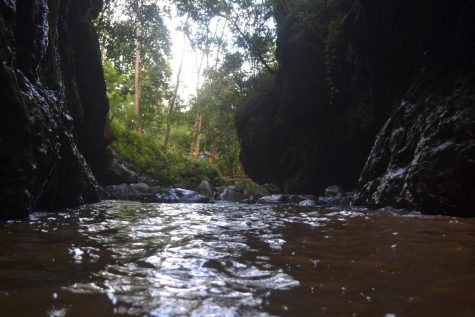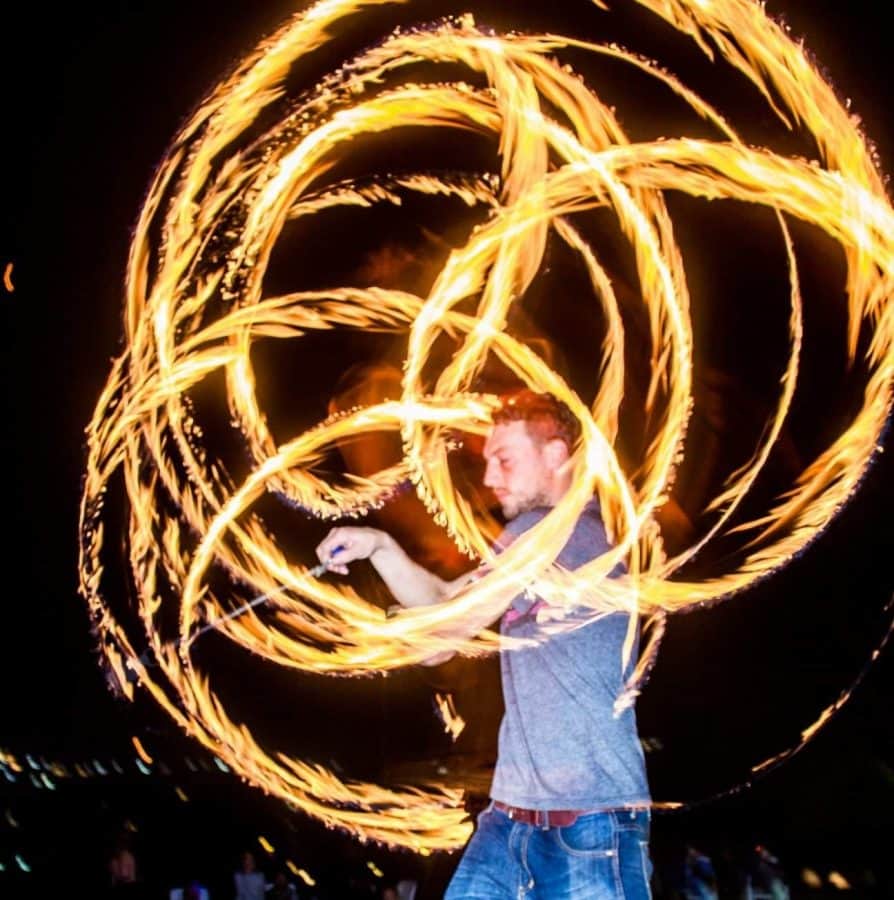Dispatches From Abroad: Tourists go down the ‘Pai hole’
September 24, 2019
In Thailand, I spent my first two weeks going to outdoor coffee shops and temples in Chiang Mai and beginning courses in Buddhism and economics at CMU. Last weekend, I decided to go deeper into the mountains, where I found an even more unfamiliar universe.
In Pai, a small town in Thailand, friends and I went to a canyon, hill tribe regions, one enormous Buddha statue and the Pai Circus Hostel, where fire-spinners offered lessons and a show. The motorbikes we rode to get around might have been my favorite part, given the desktop-background-like scenery around each turn of the road.
Other than providing a beautiful time, though, the place showed me a new side of global tourism.
In my previous experience I had known most people to make strict itineraries for their travels around the world, especially those on tight schedules going to highly-commercialized destinations. Some of the happiest people I met in Pai, though, were living by spontaneity, abiding by no constraints but their budgets or their next planned destinations.
 For example, Slade Dahlen, a traveler from Utah, had planned to spend the summer in Thailand, but changed his mind to spend it surfing in Indonesia instead. After he left Indonesia, Dahlen went to Pai in August because of a friend’s recommendation.
For example, Slade Dahlen, a traveler from Utah, had planned to spend the summer in Thailand, but changed his mind to spend it surfing in Indonesia instead. After he left Indonesia, Dahlen went to Pai in August because of a friend’s recommendation.
“I was gonna stop in for, like, two days and head up to Laos, but that was two weeks ago,” Dahlen said.
Jeroen Lemmens, a member of the fire-spinning troupe, told me this kind of change in plans is common there and is known as the “Pai hole” phenomenon.
“If you come here, make sure you have a ticket out,” Lemmens said. “A lot of people come for three days and stay one week. If they come for one week, they stay three weeks. If they come for unlimited time, they stay, often, months.”
Lemmens, originally from Belgium, was traveling around Southeast Asia before he came to Pai. He has lived and worked in Pai for two years and two months now. He said English, Dutch, Israeli and American tourists come the most, but practically no Thai people.
Indeed, most of the people I met hanging out in hammocks at bars and saw buzzing around on motorbikes fit these demographics. We mingled with strangers, speaking English, French, some German and other languages as if we had known each other for much longer than an evening.
I asked my study-abroad resident director Chaidarun “Jum” Tippawan, a Bangkok-native travel professional, why there were distinctly fewer Thai people around Pai.
Thai people love traveling, Tippawan said, but they might have different objectives for their trips. According to her, they shy away from places that cater to foreign crowds and opt instead for more “cultural” appeals.
 Local cuisine, for example; Tippawan said she, as a child, used to go with her family to the coast for seafood or the North for “greener” meals on at least a monthly basis. She said almost every Thai person will spend time in Bangkok in their lives, if for no other reason then to pay respects to the Buddha statue at Emerald Palace.
Local cuisine, for example; Tippawan said she, as a child, used to go with her family to the coast for seafood or the North for “greener” meals on at least a monthly basis. She said almost every Thai person will spend time in Bangkok in their lives, if for no other reason then to pay respects to the Buddha statue at Emerald Palace.
Tippawan said Thais used to travel to Pai, but when foreigners started coming more often, life there changed and became more expensive.
“I believe they still have some culture preserved over there, but maybe not as much as before,” Tippawan said.
Tippawan explained that this trend has occurred in many places since tourism in Thailand boomed. Since 2003, international visitors have increased nearly four times over, according to the Thailand Department of Tourism. In that year, the country saw 10.8 million arrivals, and in 2018, they had 38.28 million. The most drastic increase happened between 2010 and 2015, when the number rose from 15.94 million to 29.92 million. The dominating majority of these each year come from China, which accounted for 57.9% in 2019 as of August. In the same measurement, 6.79% came from Russia, and only 0.53% from the United States, per the Association of Thai Travel Agents.
 According to the Royal Thai Embassy in Washington, D.C., Thai outbound tourism has simultaneously increased, from just four million of their people going abroad 10 years ago to 10.2 million in 2018. Last year, they most often went to Malaysia and Laos.
According to the Royal Thai Embassy in Washington, D.C., Thai outbound tourism has simultaneously increased, from just four million of their people going abroad 10 years ago to 10.2 million in 2018. Last year, they most often went to Malaysia and Laos.
The embassy mentioned that also in that year, the Thai baht appreciated by 4%, which suggests a continuation of this trend in the years to come. Tippawan also said cheaper air fares and accessible accommodations have encouraged Thai people to travel internationally more often and made taking days of work for a trip less “taboo.”
These figures and trends fall in line with most international tourism in the past couple of decades.
I have now visited five countries in Europe, Costa Rica, Singapore and Thailand outside of my home country. Pai, with its light atmosphere and dynamic with friendly locals, taught me that people from different places travel for different reasons. Some want to see new places, some to learn about new ways of life, some to improve themselves and some just for fun.
 Dahlen enjoyed Pai’s Mua Pheng Waterfall, where he had spent most of his mornings of the past two weeks. He said he would go to the waterfall every day simply because it was “probably one of the coolest, most exciting things” he could be doing.
Dahlen enjoyed Pai’s Mua Pheng Waterfall, where he had spent most of his mornings of the past two weeks. He said he would go to the waterfall every day simply because it was “probably one of the coolest, most exciting things” he could be doing.
“It’s been a while since I had something exhilarating,” Dahlen said.
In Pai, that exhilaration awaits.










